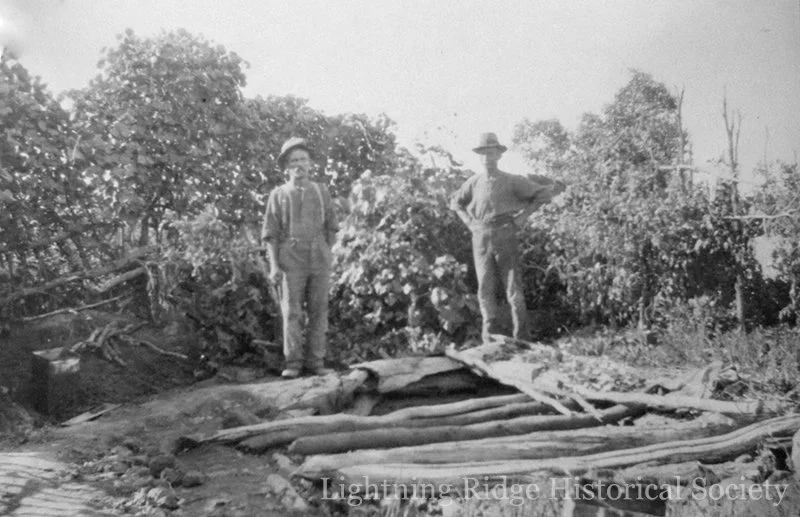Bald Hill
The Bald Hill opal field was discovered in 1915 by Snowy Brown and Jack Regan. The field lies to the north of the surveyed town, on the edge of the ridge before the great black soil plain to the east.
The field was named for its lack of trees. Trees are often considered a surface indicator of opal, Bald Hill clearly is the exception that proves the rule.
The opal level at Bald Hill is between 40 and 50 feet, although one shaft was sunk to 100 feet with eleven opal-bearing levels.
“Irish” Joe Hegarty and Walter Bradley.
The area was mined by Snowy and Jack, “Smiler” Lawler, Peter O'Donnell, Ted Moody and Archie Gillespie, Jack Phillips, Phil James, Walter Bradley, Dick Hougett and Jim Sharpe, Paddy Tierney, the Bruce brothers, and Sandy Randall.
In 1915, Jack Phillips, Walter Bradley and “Irish” Joe Hegarty found The Flame Queen at the Bald Hill field. While not the best or most valuable stone ever to come out of Lightning Ridge, The Flame Queen may well be the most famous.
According to The Lightning Ridge Book by Stuart Lloyd, the field produced £122,000 worth of opal by 1967.
Article: Research by Russell Gawthorpe and Leisa Carney, edited by Russell Gawthorpe. LRHS research compiled by Len Cram and Barbara Moritz. Sources: The Lightning Ridge Book, Stuart Lloyd, 1967, p. 65; Lightning Ridge - The Home of the Black Opal: Unique to the World, Gan Bruce, 1983, pp. 78-79; The occurrence of opal at Lightning Ridge and Grawin, with geological notes on County Finch, J. W Whiting & R. E. Relph, 1958, p. 9; Discover Opals: Before and Beyond 2000 with Surface Indications, Stephen Aracic, 1996, p. 139.


